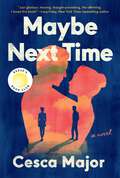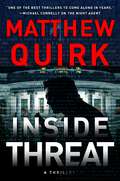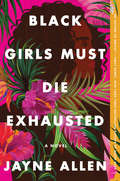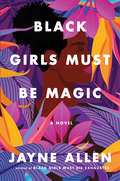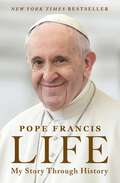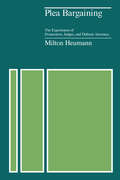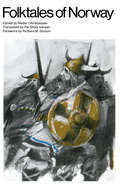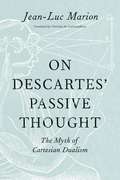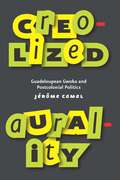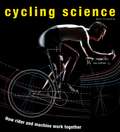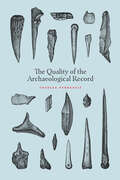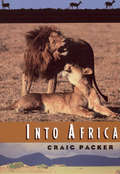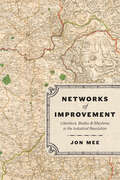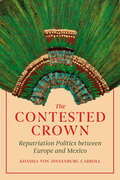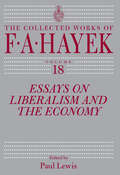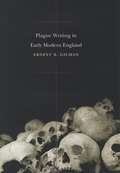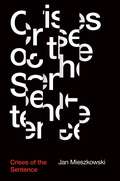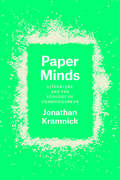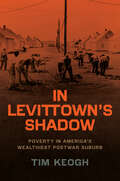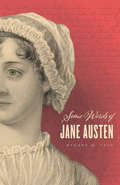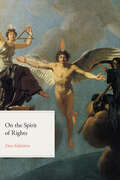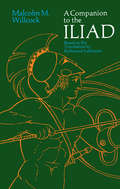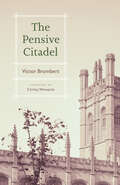- Table View
- List View
Maybe Next Time: A Reese Witherspoon Book Club Pick
by Cesca MajorA REESE’S BOOK CLUB PICK A heartwarming and emotionally poignant time-loop novel about a stressed woman who must relive the same day over and over, keeping her family and work life from imploding as she attempts to change the course of her life. Dan is Emma’s person. She’s known it since the first time she saw him dressed in lederhosen on the tube.On their fifteen year ‘dateversary’, Emma texts a list of everything she should have told Dan that morning.Tell the kids to remember their homework…And their gloves.Can you defrost some sausages?Emma just forgets to write the most important words of all – I love you – and by the end of the day everything changes.Or does it? Emma is given the chance to rewrite their future – if she can just figure out their past…
Inside Threat: A Novel
by Matthew Quirk"Quirk has earned his spot in the front ranks of thriller writers." — David BaldacciAn electrifying thriller from the author of The Night Agent now on Netflix, an attack on the White House sends the President and his top aides to take shelter in a top secret government facility buried deep underground—but they soon discover the threat is locked inside with them. Assume the worst. Code Black.The day that every secret service agent trains for has arrived. The White House has been breached; the President forced to flee to a massive doomsday bunker outside DC to defend against whatever comes next. Only the most trusted agents and officials are allowed in with him—those dedicated to keeping the government intact at all costs.Among these is Eric Hill, who has given his life to the Secret Service. They are his purpose and his family, and his impressive record has made him a hero among them. Despite his growing disillusionment from seeing Washington corruption up close, Eric can’t ignore years of instincts honed on the job. The government is under attack, and no one is better equipped to face down the threat than he is.The evidence leads him to a conspiracy at the highest levels of power, with the attack orchestrated by some of the very individuals now locked in with him. As the killers strike inside the bunker, it will take everything Eric Hill has to save his people, himself, and his country.Look for these other pulse-pounding thrillers by Matthew Quirk:Red WarningHour of the AssassinThe Night AgentDead Man Switch Cold Barrel Zero The Directive The 500
Black Girls Must Die Exhausted: A Novel (Black Girls Must Die Exhausted #1)
by Jayne Allen“It’s a good thing that this is only the first book of a trilogy, because after getting to know Tabitha, you won’t want to leave her at the end. . . . Written intimately as if you’re peering into the mind of a close friend, this book is a true testament to the stresses on women today and how great girlfriends (and grandmothers) are often the key to our sanity.” — Good Morning AmericaThe first novel in a captivating three-book series about modern womanhood, in which a young Black woman must rely on courage, laughter, and love—and the support of her two longtime friends—to overcome an unexpected setback that threatens the most precious thing she’s ever wanted.Tabitha Walker is a black woman with a plan to “have it all.” At 33 years old, the checklist for the life of her dreams is well underway. Education? Check. Good job? Check. Down payment for a nice house? Check. Dating marriage material? Check, check, and check. With a coveted position as a local news reporter, a "paper-perfect" boyfriend, and even a standing Saturday morning appointment with a reliable hairstylist, everything seems to be falling into place.Then Tabby receives an unexpected diagnosis that brings her picture-perfect life crashing down, jeopardizing the keystone she took for granted: having children. With her dreams at risk of falling through the cracks of her checklist, suddenly she is faced with an impossible choice between her career, her dream home, and a family of her own. With the help of her best friends, the irreverent and headstrong Laila and Alexis, the mom jeans-wearing former "Sexy Lexi," and the generational wisdom of her grandmother and the nonagenarian firebrand Ms. Gretchen, Tabby explores the reaches of modern medicine and tests the limits of her relationships, hoping to salvage the future she always dreamed of. But the fight is all consuming, demanding a steep price that forces an honest reckoning for nearly everyone in her life. As Tabby soon learns, her grandmother's age-old adage just might still be true: Black girls must die exhausted.
Black Girls Must Be Magic: A Novel (Black Girls Must Die Exhausted Ser. #2)
by Jayne Allen“Masterfully written and pitch perfect, Black Girls Must Be Magic is, simply, magic.”—Good Morning AmericaIn this highly anticipated second installment in the Black Girls Must Die Exhausted series, Tabitha Walker copes with more of life’s challenges and a happy surprise—a baby—with a little help and lots of love from friends old and new.For Tabitha Walker, her grandmother’s old adage, “Black girls must die exhausted” is becoming all too true. Discovering she’s pregnant—after she was told she may not be able to have biological children—Tabitha throws herself headfirst into the world of “single mothers by choice.” Between her job, doctor’s appointments, and preparing for the baby, she’s worn out. And that’s before her boss at the local news station starts getting complaints from viewers about Tabitha’s natural hair.When an unexpected turn of events draws Marc—her on and off-again ex-boyfriend—back into her world with surprising demands, and the situation at work begins to threaten her livelihood and her identity, Tabitha must make some tough decisions about her and her baby’s future. It takes a village to raise a child, and Tabitha turns to the women who have always been there for her.Bolstered by the fierce support of Ms. Gretchen, her grandmother’s best friend, the counsel of her closest friends Laila and Alexis, and the calming presence of her doula Andouele, Tabitha must find a way to navigate motherhood on her own terms. Will she harness the bravery, strength, and self-love she’ll need to keep “the village” together, find her voice at work, and settle things with Marc before the baby arrives?
Life: My Story Through History
by Pope FrancisFor the first time, Pope Francis tells the story of his life as he looks back on the momentous world events that have changed history—from his earliest years during the outbreak of World War II in 1939 to the turmoil of today. An extraordinary personal and historical journey, Life is the story of a man and a world in dramatic change. Pope Francis recalls his life through memories and observations of the most significant occurrences of the past eight decades, from the Holocaust to the fall of the Berlin Wall, Videla’s coup in Argentina to the moon landing in 1969, and even the 1986 World Cup in which Maradona scored the unforgettable “hand of God” goal.Here are the frank assessments and intimate insights of a pastor reflecting on the Nazi extermination of the Jews, the atomic bombings of Hiroshima and Nagasaki, the 2001 terrorist attack on America and the collapse of the Twin Towers, the great economic recession of 2008, the Covid-19 pandemic, the retirement of Pope Benedict XVI, and the subsequent conclave that elected him Pontiff. The “pope callejero” recounts these world-changing moments with the candor and compassion that distinguishes him, and offers important messages on major crises confronting us now, including social inequalities, climate change, international war, atomic weapons, racial discrimination, and the battles over social and cultural issues.Translated from the Italian by Aubrey Botsford
Plea Bargaining: The Experiences of Prosecutors, Judges, and Defense Attorneys
by Milton Heumann"That relatively few criminal cases in this country are resolved by full Perry Mason-style strials is fairly common knowledge. Most cases are settled by a guilty plea after some form of negotiation over the charge or sentence. But why? The standard explanation is case pressure: the enormous volume of criminal cases, to be processed with limited staff, time and resources. . . . But a large body of new empirical research now demands that we re-examine plea negotiation. Milton Heumann's book, Plea Bargaining, strongly and explicitly attacks the case-pressure argument and suggests an alternative explanation for plea bargaining based on the adaptation of attorneys and judges to the local criminal court. The book is a significant and welcome addition to the literature. Heumann's investigation of case pressure and plea negotiation demonstrates solid research and careful analysis."—Michigan Law Review
Folktales of Norway
by Reidar Christiansen; translated by Pat Shaw IversenOften lacking the clear episodic structure of folktales about talking animals and magic objects, legends grow from retellings of personal experiences. Christiansen isolated some seventy-seven legend types, and many of these are represented here in absorbing stories of St. Olaf, hidden treasures, witches, and spirits of the air, water, and earth. The ugly, massively strong, but slow-witted trolls are familiar to English-speaking readers. Less well-known, but the subject of an enormous number of legends, are the more manlike yet sinister "huldre-folk" who live in houses and try to woo human girls. These tales reflect the wildness of Norway, its mountains, forests, lakes, and sea, and the stalwart character of its sparse population. "The translation is excellent, retaining the traditional Norwegian style . . . the tales themselves will also appeal to the interested layman."—Library Journal
On Descartes' Passive Thought: The Myth of Cartesian Dualism
by Jean-Luc Marion,On Descartes’ Passive Thought is the culmination of a life-long reflection on the philosophy of Descartes by one of the most important living French philosophers. In it, Jean-Luc Marion examines anew some of the questions left unresolved in his previous books about Descartes, with a particular focus on Descartes’s theory of morals and the passions. Descartes has long been associated with mind-body dualism, but Marion argues here that this is a historical misattribution, popularized by Malebranche and popular ever since both within the academy and with the general public. Actually, Marion shows, Descartes held a holistic conception of body and mind. He called it the meum corpus, a passive mode of thinking, which implies far more than just pure mind—rather, it signifies a mind directly connected to the body: the human being that I am. Understood in this new light, the Descartes Marion uncovers through close readings of works such as Passions of the Soul resists prominent criticisms leveled at him by twentieth-century figures like Husserl and Heidegger, and even anticipates the non-dualistic, phenomenological concepts of human being discussed today. This is a momentous book that no serious historian of philosophy will be able to ignore.
Creolized Aurality: Guadeloupean Gwoka and Postcolonial Politics (Chicago Studies in Ethnomusicology)
by Jérôme CamalIn the Caribbean island of Guadeloupe, the complex interplay between anticolonial resistance and accommodation resounds in its music. Guadeloupean gwoka music—a secular, drum-based tradition—captures the entangled histories of French colonization, movements against it, and the uneasy process of the island’s decolonization as an overseas territory of France. In Creolized Aurality, Jérôme Camal demonstrates that musical sounds and practices express the multiple—and often seemingly contradictory—cultural belongings and political longings that characterize postcoloniality. While gwoka has been associated with anti-colonial activism since the 1960s, in more recent years it has provided a platform for a cohort of younger musicians to express pan-Caribbean and diasporic solidarities. This generation of musicians even worked through the French state to gain UNESCO heritage status for their art. These gwoka practices, Camal argues, are “creolized auralities”—expressions of a culture both of and against French coloniality and postcoloniality.
Cycling Science: How Rider and Machine Work Together
by Max GlaskinEvery July hundreds of thousands flock to the Champs-Élysées in Paris—and millions more to their televisions and computers—to witness the dramatic conclusion of the grueling three weeks of the Tour de France. There is no better measure of the worldwide love of the bicycle. But of the 1.2 billion cyclists traversing the world’s roadways and trails, few of us take the time to consider the science behind the sport. The simple process of getting about on two wheels brings us in touch with a wealth of fascinating science, and here journalist Max Glaskin investigates the scientific wonders that keep cyclists in their saddles. Cycling Science tours readers through a wide variety of topics, from tire rolling resistance and the difference between yield strength and ultimate strength, to the importance of aerodynamics and the impact that shaved legs have on speed. Each chapter explores a different subject—fundamentals, strength and stability, materials, power, aerodynamics, and the human factor—and is organized around a series of questions: What is the ideal frame shape? What is the biggest source of drag? What keeps a bicycle from falling over? How much power can a cyclist produce? Which muscles does cycling use? Each question is examined with the aid of explanatory diagrams and illustrations, and the book can be used to search for particular topics, or read through for a comprehensive overview of how machine and rider work together. Athletes have much to gain from understanding the science of their sports, and Cycling Science will be a must-read for cyclists of all stripes—professionals, recreational riders, and anyone seeking to enhance their enjoyment of cycling.
The Quality of the Archaeological Record
by Charles PerreaultPaleobiology struggled for decades to influence our understanding of evolution and the history of life because it was stymied by a focus on microevolution and an incredibly patchy fossil record. But in the 1970s, the field took a radical turn, as paleobiologists began to investigate processes that could only be recognized in the fossil record across larger scales of time and space. That turn led to a new wave of macroevolutionary investigations, novel insights into the evolution of species, and a growing prominence for the field among the biological sciences. In The Quality of the Archaeological Record, Charles Perreault shows that archaeology not only faces a parallel problem, but may also find a model in the rise of paleobiology for a shift in the science and theory of the field. To get there, he proposes a more macroscale approach to making sense of the archaeological record, an approach that reveals patterns and processes not visible within the span of a human lifetime, but rather across an observation window thousands of years long and thousands of kilometers wide. Just as with the fossil record, the archaeological record has the scope necessary to detect macroscale cultural phenomena because it can provide samples that are large enough to cancel out the noise generated by micro-scale events. By recalibrating their research to the quality of the archaeological record and developing a true macroarchaeology program, Perreault argues, archaeologists can finally unleash the full contributive value of their discipline.
The Federal Reserve: A New History (Studies In Macroeconomic History Ser.)
by Robert L. HetzelAn illuminating history of the Fed from its founding through the tumult of 2020. In The Federal Reserve: A New History, Robert L. Hetzel draws on more than forty years of experience as an economist in the central bank to trace the influences of the Fed on the American economy. Comparing periods in which the Fed stabilized the economy to those when it did the opposite, Hetzel tells the story of a century-long pursuit of monetary rules capable of providing for economic stability. Recast through this lens and enriched with archival materials, Hetzel’s sweeping history offers a new understanding of the bank’s watershed moments since 1913. This includes critical accounts of the Great Depression, the Great Inflation, and the Great Recession—including how these disastrous events could have been avoided. A critical volume for a critical moment in financial history, The Federal Reserve is an expert, sweeping account that promises to recast our understanding of the central bank in its second century.
Into Africa
by Craig PackerCraig Packer takes us into Africa for a journey of fifty-two days in the fall of 1991. But this is more than a tour of magnificent animals in an exotic, faraway place. A field biologist since 1972, Packer began his work studying primates at Gombe and then the lions of the Serengeti and the Ngorongoro Crater with his wife and colleague Anne Pusey. Here, he introduces us to the real world of fieldwork—initiating assistants to lion research in the Serengeti, helping a doctoral student collect data, collaborating with Jane Goodall on primate research. As in the works of George Schaller and Cynthia Moss, Packer transports us to life in the field. He is addicted to this land—to the beauty of a male lion striding across the Serengeti plains, to the calls of a baboon troop through the rain forests of Gombe—and to understanding the animals that inhabit it. Through his vivid narration, we feel the dust and the bumps of the Arusha Road, smell the rosemary in the air at lunchtime on a Serengeti verandah, and hear the lyrics of the Grateful Dead playing off bootlegged tapes.Into Africa also explores the social lives of the animals and the threats to their survival. Packer grapples with questions he has passionately tried to answer for more than two decades. Why do female lions raise their young in crèches? Why do male baboons move from troop to troop while male chimps band together? How can humans and animals continue to coexist in a world of diminishing resources? Immediate demands—logistical nightmares, political upheavals, physical exhaustion—yield to the larger inescapable issues of the interdependence of the land, the animals, and the people who inhabit it.
Networks of Improvement: Literature, Bodies, and Machines in the Industrial Revolution
by Jon MeeA new literary-cultural history of the Industrial Revolution in Britain from the late eighteenth to the mid-nineteenth centuries. Working against the stubbornly persistent image of “dark satanic mills,” in many ways so characteristic of literary Romanticism, Jon Mee provides a fresh, revisionary account of the Industrial Revolution as a story of unintended consequences. In Networks of Improvement, Mee reads a wide range of texts—economic, medical, and more conventionally “literary”—with a focus on their circulation through networks and institutions. Mee shows how a project of enlightened liberal reform articulated in Britain’s emerging manufacturing towns led to unexpectedly coercive forms of machine productivity, a pattern that might be seen repeating in the digital technologies of our own time. Instead of treating the Industrial Revolution as Romanticism’s “other,” Mee shows how writing, practices, and institutions emanating from these industrial towns developed a new kind of knowledge economy, one where local literary and philosophical societies served as important transmission hubs for the circulation of knowledge.
The Contested Crown: Repatriation Politics between Europe and Mexico
by Khadija von Zinnenburg CarrollFollowing conflicting desires for an Aztec crown, this book explores the possibilities of repatriation. In The Contested Crown, Khadija von Zinnenburg Carroll meditates on the case of a spectacular feather headdress believed to have belonged to Montezuma, emperor of the Aztecs. This crown has long been the center of political and cultural power struggles, and it is one of the most contested museum claims between Europe and the Americas. Taken to Europe during the conquest of Mexico, it was placed at Ambras Castle, the Habsburg residence of the author’s ancestors, and is now in Vienna’s Welt Museum. Mexico has long requested to have it back, but the Welt Museum uses science to insist it is too fragile to travel. Both the biography of a cultural object and a history of collecting and colonizing, this book offers an artist’s perspective on the creative potentials of repatriation. Carroll compares Holocaust and colonial ethical claims, and she considers relationships between indigenous people, international law and the museums that amass global treasures, the significance of copies, and how conservation science shapes collections. Illustrated with diagrams and rare archival material, this book brings together global history, European history, and material culture around this fascinating object and the debates about repatriation.
Essays on Liberalism and the Economy, Volume 18 (The Collected Works of F.A. Hayek #18)
by F.A. HayekA deft selection of unpublished and little-known works by F. A. Hayek that will serve to enlighten and enliven debates around the ever-changing face of Western liberalism Across seventeen volumes to date, the University of Chicago Press’s Collected Works of F. A. Hayek series has anthologized the diverse and prolific writings of the Austrian economist synonymous with classical liberalism. Essays on Liberalism and the Economy traces the author’s long and evolving writings on the cluster of beliefs he championed most: liberalism, its core tenets, and how its tradition represents the best hope for Western civilization. This volume contains material from almost the entire span of Hayek’s career, the earliest from 1931 and the last from 1984. The works were written for a variety of purposes and audiences, and they include—along with conventional academic papers—encyclopedia entries, after-dinner addresses, a lecture for graduate students, a book review, newspaper articles, and letters to the editors of national newspapers. While many are available elsewhere, two have never appeared in print, and two others have not been published in English. The varied formats collected here are enriched by Hayek’s changing voice at different stages of his life. Some of the pieces resonate as high-minded and noble; some are meant as cuts to “intellectuals” (a pejorative term when used by Hayek) like Keynes and Galbraith. All serve to distill important threads of his worldview.
Plague Writing in Early Modern England
by Ernest B. GilmanDuring the seventeenth century, England was beset by three epidemics of the bubonic plague, each outbreak claiming between a quarter and a third of the population of London and other urban centers. Surveying a wide range of responses to these epidemics—sermons, medical tracts, pious exhortations, satirical pamphlets, and political commentary—Plague Writing in Early Modern England brings to life the many and complex ways Londoners made sense of such unspeakable devastation.Ernest B. Gilman argues that the plague writing of the period attempted unsuccessfully to rationalize the catastrophic and that its failure to account for the plague as an instrument of divine justice fundamentally threatened the core of Christian belief. Gilman also trains his critical eye on the works of Jonson, Donne, Pepys, and Defoe, which, he posits, can be more fully understood when put into the context of this century-long project to “write out” the plague. Ultimately, Plague Writing in Early Modern England is more than a compendium of artifacts of a bygone era; it holds up a distant mirror to reflect our own condition in the age of AIDS, super viruses, multidrug resistant tuberculosis, and the hovering threat of a global flu pandemic.
Crises of the Sentence
by Jan MieszkowskiThere are few forms in which so much authority has been invested with so little reflection as the sentence. Though a fundamental unit of discourse, it has rarely been an explicit object of inquiry, often taking a back seat to concepts such as the word, trope, line, or stanza. To understand what is at stake in thinking—or not thinking—about the sentence, Jan Mieszkowski looks at the difficulties confronting nineteenth- and twentieth-century authors when they try to explain what a sentence is and what it can do. From Romantic debates about the power of the stand-alone sentence, to the realist obsession with precision and revision, to modernist experiments with ungovernable forms, Mieszkowski explores the hidden allegiances behind our ever-changing stylistic ideals. By showing how an investment in superior writing has always been an ethical and a political as well as an aesthetic commitment, Crises of the Sentence offers a new perspective on our love-hate relationship with this fundamental compositional category.
Paper Minds: Literature and the Ecology of Consciousness
by Jonathan KramnickHow do poems and novels create a sense of mind? What does literary criticism say in conversation with other disciplines that addresses problems of consciousness? In Paper Minds, Jonathan Kramnick takes up these vital questions, exploring the relations between mind and environment, the literary forms that uncover such associations, and the various fields of study that work to illuminate them. Opening with a discussion of how literary scholarship’s particular methods can both complement and remain in tension with corresponding methods particular to the sciences, Paper Minds then turns to a series of sharply defined case studies. Ranging from eighteenth-century poetry and haptic theories of vision, to fiction and contemporary problems of consciousness, to landscapes in which all matter is sentient, to cognitive science and the rise of the novel, Kramnick’s essays are united by a central thematic authority. This unified approach of these essays shows us what distinctive knowledge that literary texts and literary criticism can contribute to discussions of perceptual consciousness, created and natural environments, and skilled engagements with the world.
In Levittown’s Shadow: Poverty in America’s Wealthiest Postwar Suburb
by Tim KeoghNamed one of the best nonfiction books of 2023 by Publishers Weekly! There is a familiar narrative about American suburbs: after 1945, white residents left cities for leafy, affluent subdivisions and the prosperity they seemed to embody. In Levittown’s Shadow tells us there’s more to this story, offering an eye-opening account of diverse, poor residents living and working in those same neighborhoods. Tim Keogh shows how public policies produced both suburban plenty and deprivation—and why ignoring suburban poverty doomed efforts to reduce inequality. Keogh focuses on the suburbs of Long Island, home to Levittown, often considered the archetypal suburb. Here military contracts subsidized well-paid employment welding airplanes or filing paperwork, while weak labor laws impoverished suburbanites who mowed lawns, built houses, scrubbed kitchen floors, and stocked supermarket shelves. Federal mortgage programs helped some families buy orderly single-family homes and enter the middle class but also underwrote landlord efforts to cram poor families into suburban attics, basements, and sheds. Keogh explores how policymakers ignored suburban inequality, addressing housing segregation between cities and suburbs rather than suburbanites’ demands for decent jobs, housing, and schools. By turning our attention to the suburban poor, Keogh reveals poverty wasn’t just an urban problem but a suburban one, too. In Levittown’s Shadow deepens our understanding of suburbia’s history—and points us toward more effective ways to combat poverty today.
Some Words of Jane Austen
by Stuart M. TaveJane Austen’s readers continue to find delight in the justness of her moral and psychological discriminations. But for most readers, her values have been a phenomenon more felt than fully apprehended. In this book, Stuart M. Tave identifies and explains a number of the central concepts across Austen’s novels—examining how words like “odd,” “exertion,” and, of course, “sensibility,” hold the key to understanding the Regency author’s language of moral values. Tracing the force and function of these words from Sense and Sensibility to Persuasion, Tave invites us to consider the peculiar and subtle ways in which word choice informs the conduct, moral standing, and self-awareness of Austen’s remarkable characters.
On the Spirit of Rights (The Life of Ideas)
by Dan EdelsteinBy the end of the eighteenth century, politicians in America and France were invoking the natural rights of man to wrest sovereignty away from kings and lay down universal basic entitlements. Exactly how and when did “rights” come to justify such measures? In On the Spirit of Rights, Dan Edelstein answers this question by examining the complex genealogy of the rights that regimes enshrined in the American and French Revolutions. With a lively attention to detail, he surveys a sprawling series of debates among rulers, jurists, philosophers, political reformers, writers, and others who were all engaged in laying the groundwork for our contemporary systems of constitutional governance. Every seemingly new claim about rights turns out to be a variation on a theme, as late medieval notions were subtly repeated and refined to yield the talk of “rights” we recognize today. From the Wars of Religion to the French Declaration of the Rights of Man and of the Citizen to the 1948 Universal Declaration of Human Rights, On the Spirit of Rights is a sweeping tour through centuries of European intellectual history and an essential guide to our ways of thinking about human rights today.
Diversity's Child: People of Color and the Politics of Identity
by Efrén O. PérezAn incisive look at how America’s continued demographic explosion has spurred the development of a new identity as people of color. For decades now, pundits and political scientists have been pointing to a major demographic change that’s underway in the United States. Demographers project that whites will become a minority of the US population and that minority groups will jointly comprise a majority before 2050. Diversity’s Child appraises the political ramifications of this change. Efrén O. Pérez deftly argues that America’s changing demographics are forging a new identity for many as people of color—that unifies the political outlook of assorted minority groups. Drawing on opinion surveys of multiple minority groups, social science experiments with minority adults, content analyses of newspapers and congressional archives, and in-depth interviews with minority individuals, Pérez makes two key points. First, a person of color's identity does exist, and we can reliably measure it, as well as distinguish it from other identities that minorities hold. Second, across a wide swath of circumstances, identifying as a person of color profoundly shapes how minorities view themselves and their political system. Diversity’s Child is a vital and engaging look at America’s identity politics as well as at how people of color think about racial disparities and how politics can best solve them.
A Companion to The Iliad: Based on Translation by Richmond Lattimore
by Malcolm M. WillcockThose who are able to read Homer in Greek have ample recourse to commentaries, but the vast majority who read the Iliad in translation have not been so well served—the many available translations contain few, if any, notes. For these readers, Malcolm M. Willcock provides a line-by-line commentary that explains the many factual details, mythological allusions, and Homeric conventions that a student or general reader could not be expected to bring to an initial encounter with the Iliad. The notes, which always relate to particular lines in the text, have as their prime aim the simple, factual explanation of things the inexperienced reader would be unlikely to have at his or her command (What is a hecatomb? Who is Atreus' son?). Second, they enhance an appreciation of the Iliad by illuminating epic style, Homer's methods of composition, the structure of the work, and the characterization of the major heroes. The "Homeric Question," concerning the origin and authorship of the Iliad, is also discussed. Professor Willcock's commentary is based on Richmond Lattimore's translation—regarded by many as the outstanding translation of the present generation—but it may be used profitably with other versions as well. This clearly written commentary, which includes an excellent select bibliography, will make one of the touchstones of Western literature accessible to a wider audience.
The Pensive Citadel
by Victor BrombertA reflective volume of essays on literature and literary study from a storied professor. In The Pensive Citadel, Victor Brombert looks back on a lifetime of learning within a university world greatly altered since he entered Yale on the GI Bill in the 1940s. Yet for all that has changed, much of Brombert’s long experience as a reader and teacher is richly familiar: the rewards of rereading, the joy of learning from students, and most of all the insight to be found in engaging works of literature. The essays gathered here range from meditations on laughter and jealousy to new appreciations of Brombert’s lifelong companions Shakespeare, Montaigne, Voltaire, and Stendhal. A veteran of D-day and the Battle of the Bulge who witnessed history’s worst nightmares firsthand, Brombert nevertheless approaches literature with a lightness of spirit, making the case for intellectual mobility and openness to change. The Pensive Citadel is a celebration of a life lived in literary study, and of what can be learned from attending to the works that form one’s cultural heritage.
